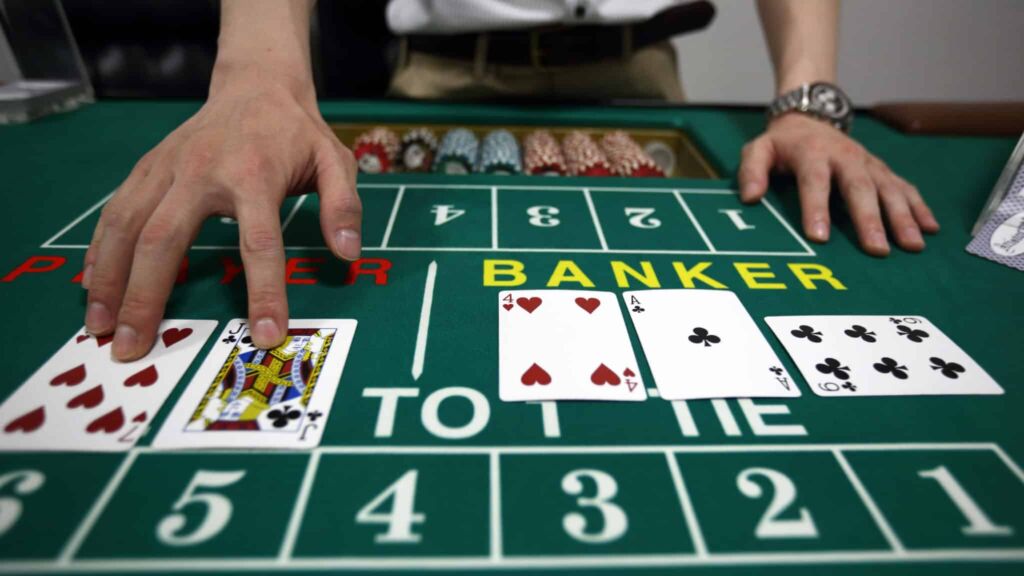Baccarat, celebrated for its elegance and ease, lures in a vast spectrum of gamblers to offline and virtual casinos alike. One of the captivating elements is the Third Card Rule, which decides under what conditions a third card will be dealt to either the player or the banker. Grasping this rule is essential for improving one's approach to Baccarat. This write-up offers an all-inclusive explanation of the Third Card Rule, exploring its application, influence on play, and tactical implications.
What is the Third Card Rule?
Baccarat involves wagering on the result of two hands: the Player's and the Banker's. Participants aim to foresee which hand will get closest to a sum of nine. Utilizing six to eight decks, each card holds a unique value: Aces carry a value of 1, Cards 2 through 9 equal their face value, and 10s, Jacks, Queens, and Kings count as zero. Bets can be made on the Player hand, the Banker hand, or if the hands will tie. Drawing rules and the Third Card Rule guide the flow and conclusion of the game.
An Explanation of the Third Card Rule: This rule provides automatic guidance for when the Player or Banker hands should receive an additional card based on the total value of their initial two cards. Player Hand Guidelines:
- Player's Initial Total of 0-5: If the Player's total ranges from 0 to 5, a third card is dealt. Totals of 6 or 7 mean the hand stands without drawing a third card.
- Player's Initial Total of 6-7: For Player totals of 6 or 7, no additional card is drawn, and the hand remains as is.
Banker Hand Rules: The guidelines for the Banker are more nuanced and consider the value of the Player’s third card, if one is drawn.
- Banker’s Initial Total of 0-2: With a Banker total between 0 and 2, a third card is drawn, regardless of what the Player holds.
- Banker’s Initial Total of 3: The Banker draws an additional card unless the Player’s card is an 8. In that case, the Banker holds.
- Banker’s Initial Total of 4: If the Player's third card is a 2 through 7, the Banker draws another card. An 8 means the Banker remains.
- Banker’s Initial Total of 5: The Banker receives a third card if the Player's third card is numbered between 4 and 7. Otherwise, the hand stands.
- Banker’s Initial Total of 6: Upon a Player card between 6 and 7, the Banker pulls another card. All other Player cards leave the Banker standing.
- Banker’s Initial Total of 7: A Banker starting with 7 sticks with their hand, drawing no further cards.
Effects of the Third Card Rule on How the Game unfolds
With the aspect of unpredictability that the Third Card Rule brings, Baccarat becomes far more about luck than sheer skill. Since the rule plays out automatically, players can't sway the result based on which cards are picked, yet familiarizing oneself with these guidelines aids in making more calculated bets.
- The House Edge: Baccarat has differing house edges that are contingent on the bets made. The Banker bet is near a house edge of 1.06%, the Player bet edges towards 1.24%, while betting on a tie, though less advantageous, carries a house edge of about 14.36%.
- Betting Methodology: Though the Third Card Rule leaves players without influence, strategizing around betting can be profitable, particularly betting on the Banker because of its diminished house edge.
Players' Engagement: Adequately understanding the Third Card Rule brings an enriched and clarified gaming experience, demystifying the card drawing system. Comprehending its automatic aspect allows players to revel in the game without the weight of complex tactics.
Real-World Application and Examples
Casino Rules and Differentiation: While there's considerable uniformity around the Third Card Rule across casinos, understanding the specific house rules of each establishment remains crucial as variations may alter the game aspects.
- Platforms Online: Numerous online gaming platforms feature standard Third Card Rule Baccarat games. Details regarding rules and payout tables are generally accessible via casino web portals or in-game.
- Physical Casinos: Traditional casinos generally have the Third Card Rule prominently displayed at Baccarat tables. Casino staff, including dealers, is on hand to teach newcomers the rules. For instance, Monte Carlo Casino, famous for luxurious Baccarat setups, adheres to the Third Card Rule for an authentic player experience. Equally, Las Vegas' The Venetian provides several Baccarat tables, keeping to standard rules and offering different betting limits.
Strategic Considerations
Odds Understanding: Whilst player intervention is limited concerning the Third Card Rule, awareness of the game odds alongside the house edge can assist in wagering prudently. Despite the 5% commission on Banker bet wins, it's statistically most advantageous.
- Bankroll Oversight: Managing one's gaming budget effectively should be a priority for any casino player. Bet limits and strategic bankroll allocation can help players mitigate the game swings and maximize enjoyment.
- Digital Practice Platforms: Plenty of online casinos propose free Baccarat games designed to help players engage with the Third Card Rule, sans financial risk. This allows for familiarity with game mechanics and personal strategy refinement.
Conclusion
A crucial part of Baccarat, the Third Card Rule, dictates hand evaluations and eventual results. Though it adds an air of complexity and randomness, a solid grasp of the rule boosts player enjoyment and bet clarity. Whether in physical or online settings, awareness of the Third Card Rule lends confidence in Baccarat play, inviting players to explore its depths and enhance the gaming experience.



